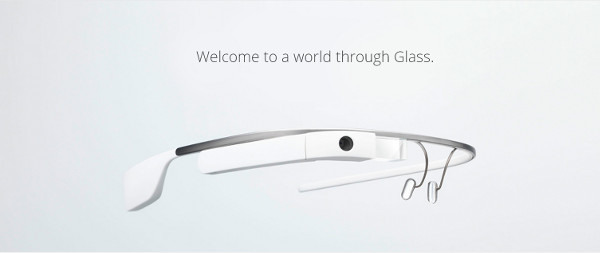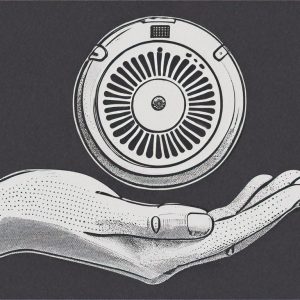
There have been many questions about the uses of Google Glass in the real world. It has been flaunted on the red carpet, resulted in tickets from suspected use when driving and it has even been suggested that Google Glass could be used as a sex accessory. It could be a bit difficult to find day to day uses for the device, but when it comes to certain industries, Google Glass might one day become a necessity.
Tuong Huy Nguyen, principal research analyst at Gartner spoke to CBR about augmented reality and whether it could ever be practical enough to use in different industries. Several job roles that Nguyen pointed out would find head mounted displays such as Google Glass helpful included surgeons and fire fighters.
"A fire fighter would benefit from wearing a head mounted display, it could provide him with a floor layout map in front of him, so he has a better idea of where he needs to go and he can find better sources of power."
A Google Glass app for firefighters is currently in the works, which could allow teams to view floor maps of unfamiliar buildings where smoke clouds their route, and enable firefighters to see diagrams and instructions for aiding in-car rescues.

Nguyen continued: "When you’re a surgeon or emergency worker, it gives the incentive to improve your job function and increase safety. Having access to this information, whether it’s an MRI or an x-ray, allows him to know where to focus and where to avoid. It’s definitely a visual enhancement for the surgeon."
In January at a three-day medical conference in India, a US-based doctor, Dr Selene G. Parekh, performed foot and ankle surgery using Google Glass.
The surgery was recorded using Google Glass and broadcasted live on the internet.
There have only been a handful of times that the device has been used in surgery. In July 2013, orthopaedic surgeon Dr Gil Ortega streamed a live procedure online using Glasster Streamer, in August Dr Christopher Kaeding wore Google Glass when performing knee surgery, and in September 2013 an Indian doctor used Google Glass when performing an upper gastro intestinal laparoscopy procedure.

CBR spoke to Dr Selene G. Parekh about the surgery he performed, and whether Google Glass helped or hindered his job.
Parekh said that it was an exciting opportunity to use Google Glass during the operation: "Surgery went great. There was a lot of anticipation and excitement about the use of the glass.
"In the future, I can see the glass seamlessly pulling up x-rays, MRIs, CT scans, anatomy pictures and the like, to enhance and improve surgeries. It could also measure what we see and bring in surgical consultations from around the globe. The potential is enormous. It will serve as a great educational tool."
When asked why Parekh chose Google Glass specifically to be used during the surgery he said that it "allows replication of exactly what the surgeon sees. Unlike a camera man in the room or a camera in the handle of the surgical lights, Google Glass replicates the surgeon’s line of sight, the ideal line of sight to visualise the surgery. The other solutions interfere with the surgeon’s line of sight and therefore take footage from another angle."
Nguyen noted, however, that Google Glass requires you to take your eyes off the task at hand to view the screen, saying: "When you put on Google Glass, you have to look up and to the right to get your information. So the display is near your eye but not in your field of vision." Although this could be seen as a benefit of the device, as it is not in your direct field of vision so it can’t be an unwanted distraction, Nguyen points out that in certain situations, you have to keep your eyes focused on one particular spot. "You can’t be distracted or looking up and to the right all the time, but directly at the situation. For example, a technician trying to repair a mechanical object that is dangerous wouldn’t want to look away."
However, Parekh did not find the device distracting or in an awkward position, but he would change a few things about Google Glass: "I think there are a number of features I would like to have: a higher mega pixel camera, the ability to zoom in and out, and easier/more seamless connections with Google+ and Wi-Fi."
Google Glass is a brand new technology, with inevitable updates in the next few years to make it more adaptable to particular industries. With a mainstream release expected this year, Google Glass can find its initial place in our world, whether it’s as a hi-tech accessory for the public or as a staple device of the medical industry. Parekh believes it could be a great educational tool for future surgeons.
"It will help surgeons in difficult cases, rare cases, or surgeons learning new surgeries. It will allow surgeons to collaborate, educate, and teach more easily. Ultimately, I think it will improve outcomes and patient success."
Do we think that one day everyone will have their own Google Glass? Or will it be saved for the rich, famous and the big industries? It’s probably too soon to say, but with several successful surgeries already performed with Google Glass as the surgeon’s electronic assistant, and emergency services already unveiling the gadget’s potential, Google Glass could soon be more than just cool wearable technology, but a legitimate life saving device.
Parekh is sold on the technology, saying he believes it will eventually become a huge part of the medical industry and he plans to use the technology again in his work. If every surgeon and every firefighter was supplied with Google Glass, could this be the difference between life and death in such crucial industries and situations?
"I think it has the potential to revolutionise the world and make it an even smaller place", adds Parekh. And with the smell steps Google Glass has already taken, I agree, that very soon it will take giant leaps.






